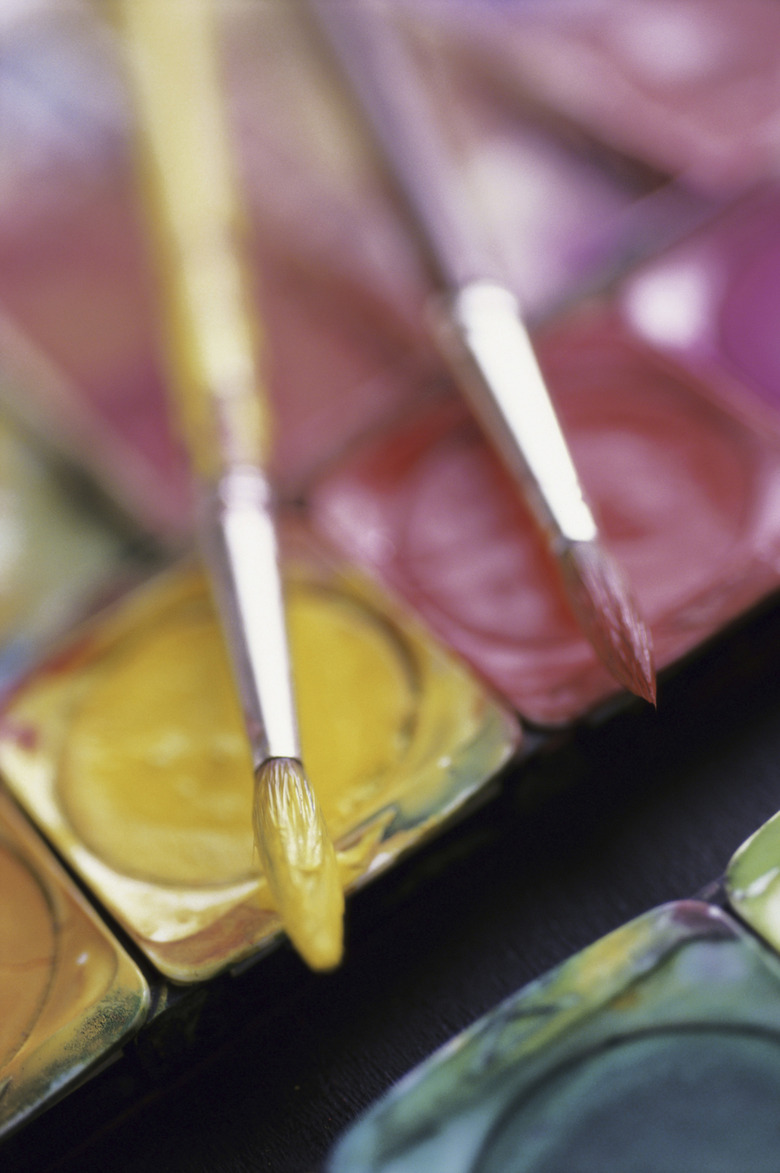How To Make A 3D Model Of A Carbon Atom
Most students learn about atoms and characteristics of the elements on the periodic table in middle and high school science classes. Consider choosing a simple atom, such as carbon, to represent through a hanging mobile 3D model. Although simple in structure, carbon and compounds containing carbon form the basis of all life. Making a 3D model of a carbon atom can help students demonstrate their understanding of protons, neutrons and electrons that form atomic structure.
Step 1
Spray paint six of the twelve medium-sized Styrofoam balls all one color to represent the protons of the carbon atom. Larger than electrons, proton particles have a positive electrical charge and are located in the nucleus of the atom. Use a marker to write a plus sign on each Styrofoam proton ball when the paint has dried.
Step 2
Spray paint the remaining six medium-sized Styrofoam balls a second color to represent the neutrons of the carbon atom. Neutrons are about the same size as protons and are located in the nucleus of the atom, but they have no electrical charge.
Step 3
Spray paint the six small Styrofoam balls a third color to represent the electrons of the carbon atom. Carbon contains six electrons, which are tiny particles with a negative charge that orbit the atom's nucleus. Use the marker to write a minus symbol to show the charge on each Styrofoam electron ball.
Step 4
Cut a piece of construction paper into a circular shape large enough to hold all twelve proton and neutron balls. Use craft glue to randomly attach the protons and neutrons to both sides of the construction paper, forming a nucleus for the carbon atom.
Step 5
Thread clear fishing line through a needle and tie a large knot at the end. Run the needle through the top of the construction paper of the carbon atom's nucleus. Tie the other end of the fishing line to the bottom of a wire clothes hanger to suspend the nucleus in the air and begin forming the 3D model.
Step 6
Bend the floral wire into a circular shape wider than the nucleus. Pierce all six Styrofoam electron balls onto one end of the wire and spread them out evenly to model orbiting electrons. Twist the two ends of the wire together to close the electron orbit circle.
Step 7
Use the clear fishing line to attach the electrons on floral wire to the hanger holding the nucleus. The electrons should hang around the nucleus — not below or above it –to accurately represent a carbon atom.
Things Needed
- Floral wire
- 6 small Styrofoam balls
- 12 medium Styrofoam balls
- Water-based spray paint in any 3 colors
- Marker
- Construction paper
- Scissors
- Glue
- Needle
- Fishing line
- Wire clothes hanger
Warning
Only use water-based spray paint on Styrofoam; regular spray paint will dissolve it and ruin your project.
References
Cite This Article
MLA
King, Kristy. "How To Make A 3D Model Of A Carbon Atom" sciencing.com, https://www.sciencing.com/make-3d-model-carbon-atom-7243382/. 24 April 2017.
APA
King, Kristy. (2017, April 24). How To Make A 3D Model Of A Carbon Atom. sciencing.com. Retrieved from https://www.sciencing.com/make-3d-model-carbon-atom-7243382/
Chicago
King, Kristy. How To Make A 3D Model Of A Carbon Atom last modified August 30, 2022. https://www.sciencing.com/make-3d-model-carbon-atom-7243382/
